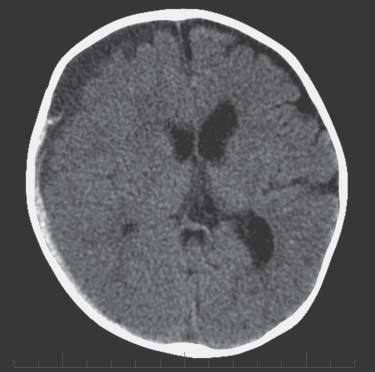Case 67 Pediatric Head Trauma Jeffrey Atkinson, José Luis Montes, and Abdulrahman J. Sabbagh Fig. 67.1 Computed tomography scan of the brain revealing extraaxial fluid collection along the right convexity. The patient was taken urgently to the operating room for decompression and evacuation of the subdural hematoma. He recovered well from the injury.
 Clinical Presentation
Clinical Presentation

 Questions
Questions
 Answers
Answers
67 Pediatric Head Trauma
Case 67 Pediatric Head Trauma Fig. 67.1 Computed tomography scan of the brain revealing extraaxial fluid collection along the right convexity.
 Clinical Presentation
Clinical Presentation

 Questions
Questions
 Answers
Answers
< div class='tao-gold-member'>
Only gold members can continue reading. Log In or Register to continue
Stay updated, free articles. Join our Telegram channel

Full access? Get Clinical Tree


